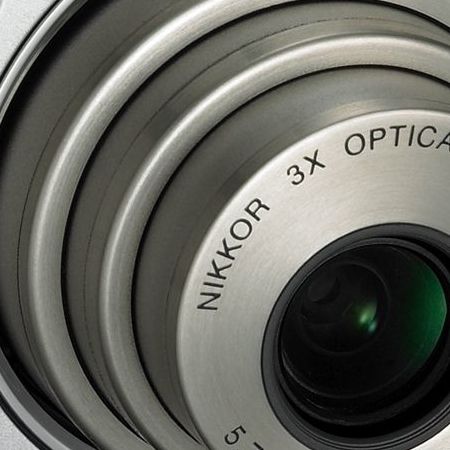The Coolpix L12 sits at the top of Nikon's L-series of budget digital cameras and despite the "usual" naming conventions and the "12" in the camera's name, this is not a 12-megapixel model but a 7.1-megapixel compact.
Our quick take
Okay, so this is not an expensive digital camera and while it is bland in terms of styling, it still boasts a couple of standout features particularly at this £150 (all but a penny) price point.
Image quality is good and there are plenty of scene modes (15 in all) to play with to help on more challenging situations.
Shame though, there's no proper manual control.
Overall however, L12 is plagued by its sluggish performance and the lack of control over the ISO settings, which almost completely wipes out the benefit of VR.

Nikon Coolpix L12 digital camera - 3.0 / 5
| FOR | AGAINST |
|---|---|
|
|
This is a small but not ultra-compact digital camera that in terms of styling is pretty bland – in a pocketable way. Its features include a surprisingly high-end combination of Face detection AF, manual white balance control (as well as the standard set of presets) and optical image stabilisation.
You get a pretty basic camera otherwise: plastic – but tough – build, a bright F2.8 to F4.7 3x optical zoom lens providing a 35-105mm focal range and you get the usual array of scene modes, flash options and a nice 640 x 480-pixel movie mode with sound.
The large 2.5-inch LCD is a low-resolution affair (with 115k pixels) but despite that, it does the job. That is until you get brighter conditions when it is both hard to see clearly and it will flare horribly, when shooting towards the light making things worse still. The lack of an optical viewfinder means there's little option but to struggle through.
The lack of any form of manual control means you have to rely on the camera to do the thinking for you and mostly things work well. Having access to a high ISO setting is nice, you get up to ISO 1600, but the fact there's no control over the ISO settings whatsoever means indoors and in low lighting, the camera picks a setting up to the maximum. The consequences for this are discussed shortly.
But the real problem is it makes the lens shift anti-shake or as Nikon calls it, Vibration Reduction (VR) system almost redundant and here's why. With VR, you can usually opt to use a lower ISO (and so shakier, slower shutter speeds) than otherwise at your disposal and still get a properly exposed sharp photo.
Here the camera will pick higher ISO settings in low light thus introducing unnecessary amounts of noise into a shot and removing the benefit of the VR as faster shutter speeds are used thanks to the higher ISO setting.
Another bugbear is the sluggish performance. Four seconds to start up, about two and a half seconds between shots and a seven and a half second flash recycle time (where the camera locks up totally as well) mean this is neither a family friendly camera or one to use for anything other than set up shots or subjects that are unlikely to move any time soon.
On the plus side, image quality is good at the lower ISO settings and by that, I mean below ISO 200. Images are saved to either the 21MB of internal memory (that's enough for six top quality images) or on SD/SDHC/MMC external storage.
Detail is well captured, particularly below that ISO 200 threshold, as are colours, which are naturally rendered. The Face detection AF works nicely but as is common for such systems, it works best when the person's face is clearly visible a directed toward the camera.
Metering is excellent as is the white balance set up and it is only when you get over ISO 400 that noise and image processing problems (detail smoothing for example) start to "wipe" the smile from any face in a shot.
There are a couple of other neat tools built into the L12 that mitigate (but not entirely) the problems. Nikon's D-Lighting technology is included to help lift shadows in backlit subjects for example, but it is a convoluted button process to get to it, you get PictBridge support too and you can resize and copy images all in-camera.
To recap
Sluggish performance and with no way to control the ISO it means it just does not cut the mustard
